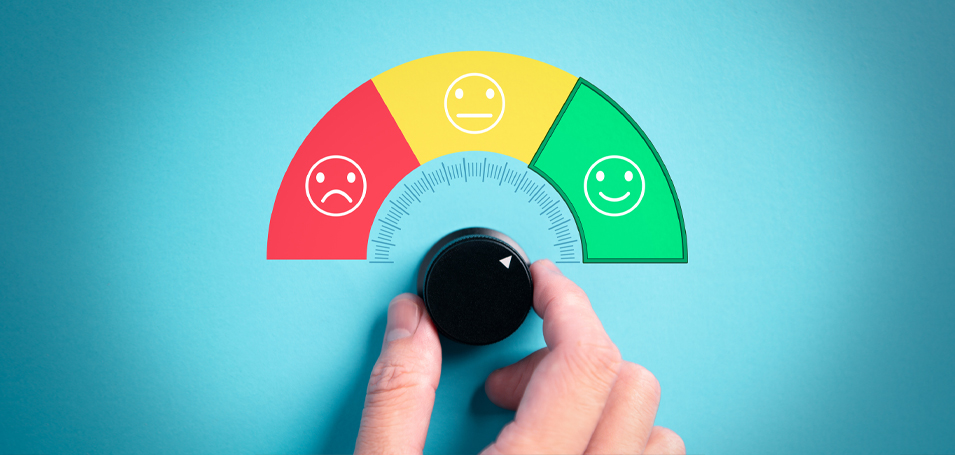SaaS businesses are warming up to the realization that their customer education teams wield more power than they might have thought. Organizational design has a significant impact on a company’s success, but it can also create unforeseen opportunity costs. By aligning teams with shared missions around a shared goal, those teams have a much higher probability of reaching that goal. What is strategy, without alignment, after all? Therein, “teams that support existing customers should focus strictly on customer retention metrics” sounds reasonable, right?
My intent for this post is to take a second look at those historical boundaries between departments and metrics, and make a case that customer education teams can impact both sides of a SaaS company’s unit economics: sure, they can keep customers happy, but they can also differentiate a business among competitors, enable prospects to evaluate your offering, and generate new demand.
SaaS unit economics
The core of any SaaS company is its unit economics. The ratio of acquisition costs (CAC) to lifetime value of a customer (LTV) gives us a single metric to judge how efficient a SaaS business is at generating profit. We can decrease CAC or we can increase LTV, and most SaaS businesses will design their organizations around these key drivers. Marketing and sales teams will optimize for the lowest possible CAC. Services teams (including Customer Success) will optimize for the highest possible LTV. And therein lies the problem: most customer education teams sitting in services departments have a hard enough time measuring how they influence LTV via customer retention, let alone CAC via new demand. As consumer behavior evolves, customer education teams have a growing influence on customer acquisition, particularly as the lines between customer service teams and marketing teams blur.
3 ways customer education can drive demand
So where can customer education teams influence customers who are in the buying journey? In my experience working on HubSpot’s customer education program, HubSpot Academy, I’ve seen three come to the forefront.
1. Competitive differentiation
The first is through competitive differentiation. Sooner or later, this may fall away as more companies realize that strong customer education is a table stakes part of the product offering, but in the meantime – all else equal, a company with a stronger self-service education strategy will beat out a substitute without it. Over the last few decades, we’ve seen software buying evolve from being primarily influenced by the “check signers” at the top of the organization ladder to the software’s end-users, whose job it is to actually weave value from the investment. Those end-users are more likely to prioritize how they’ll need to adopt, train their teammates, train new hires, get support, and keep the company’s skills sharp in order to maximize the returns they get from the newly adopted software. End-users know that they need to make the magic happen, so they’re going to do their due diligence on a vendor’s education offering.
According to Gartner Inc. research, 27% of the B2B software buying process is spent independently researching solutions online. If that research is being done by potential software end-users, they’re likely looking at documentation, self-education materials, and support offerings. These offerings are no longer icing on the cake – they’re as important as anything else listed on a pricing page because they bridge the perceived gaps between status quo, successful implementation, and ongoing success. Investing in customer education, and how it’s positioned and presented to these prospects, can go a long way in differentiating a company from its competition.
2. Enhanced evaluation
I recently had a user interview with a HubSpot customer who, in her explanation of why she was taking courses in HubSpot Academy, mentioned something I hadn’t heard directly before. She was asked by her CEO to take technical courses in HubSpot Academy as part of their evaluation of HubSpot’s marketing and sales automation software. I would have expected a prospect to use our trial or freemium experiences to do that, but she said that those would take time to really see what HubSpot looks like when it’s set up and revving in high gear. In other words, she wanted a time machine to see what her instance of HubSpot might look like three months from now after they’re onboarded and even “everboarded.”
I’ll be the first to admit that this is an anecdotal use case for customer education from a user interview, but having jumped into a vendor’s documentation myself in the evaluation phase, and thinking about all of those prospects who are in the research phase and not yet ready to talk to a sales rep or enter their credit card details – this use case might just be a powerful untapped opportunity to influence buying decisions. Customer education, particularly in video walk-through format, is an efficient way to get a lay of the land and start to learn exactly how an end-user would use the software to make their lives easier. It also enables a prospect to qualify themselves out if they’re not a fit, avoiding a close-lost sales cycle or worse, a destined-to-churn customer.
When I logged off from the call with that user, I thought to myself, ‘It’s a good thing we aim for high production value and strong instructional design because shortcuts might have lost us that deal.’
3. Word-of-mouth demand
I spend a lot of time thinking about how to build products that sell themselves, and I think it’s time we give customers their rightful place in the virtuous cycle of demand they influence for our companies. There is no better marketer or salesperson than an existing customer whom a prospect trusts to give them an honest, transparent perspective on whether a software vendor is a fit for their needs.
Enabling customers to self-onboard is really just scratching the surface of a comprehensive customer education strategy. Customer education isn’t just reactive ‘help’ or new user onboarding, it can be proactive, and it shouldn’t just stop at developing basic understanding but continue on to support advanced mastery. If we use the “five whys” heuristic on our customers, we ask ourselves:
- Why are they using our software? To do their job faster or better.
- Why do their job faster or better? To generate more value for the business.
- Why generate more value for the business? To get ahead in their careers.
- Why get ahead in their careers? To make more money.
- Why make more money? To put food on the table, take the family vacation, pay off that credit card.
Ah, that’s right. These aren’t just users, they’re humans! Our software is likely only a tiny part of their day. But what if we went beyond helping them learn our software, and we helped them grow their careers? What if we blurred the line between customer education and career development? What additional awareness could be influenced by your customers putting your software on the ‘technical skills’ section of their resume because they’re proud of their mastery of it? How much more likely are they to advocate for our company if we help them put food on their table?
These are questions that any growing B2B SaaS company should ask themselves when considering the potential of their customer education program. Creating word-of-mouth demand isn’t easy, but it has the potential to turn your customer base into your most passionate marketing and sales team.
Key Takeaways
I hope this post has given you a reason to think about the untapped potential in your customer education program, and why modern companies are softening the organizational boundaries that SaaS unit economics tend to create.
Here are four takeaways to consider:
- The additional calories spent making customer education content as polished and thoughtful as possible are worth it. The idea of top-of-the-funnel content vs bottom of the funnel content is going away as B2B SaaS consumers become more adept at evaluating vendors. All of your digital content is fair game in enabling their evaluation process.
- Your customer education team may already have more of an impact on customer acquisition than you think, and if you start to see your customer education experience from the perspective of a prospect, you’ll find a great opportunity to invest in something that helps your SaaS business grow.
- Teaching your customers frameworks and heuristics will not only help them self-educate, and (cross-)educate their teammates, but it will help your customers tell (sell) a narrative that helps their peers connect the dots between their unique problem and the potential solution your product offers.
- Remember the five whys of your customers, and why they’re using your software in the first place. If you solve for the customer of your customer, you really can’t go wrong. If you solve for the careers of your customers, they’ll advocate for you forever.

Eric Peters is passionate about the future of education. As the Growth Product Manager for HubSpot’s integrated online learning platform and credentials system, HubSpot Academy, Peters is responsible for enabling content creators to drive user acquisition, customer retention, and partner enablement efforts for the company, while delivering a world-class educational experience for its users. You may find him on LinkedIn and Twitter.




